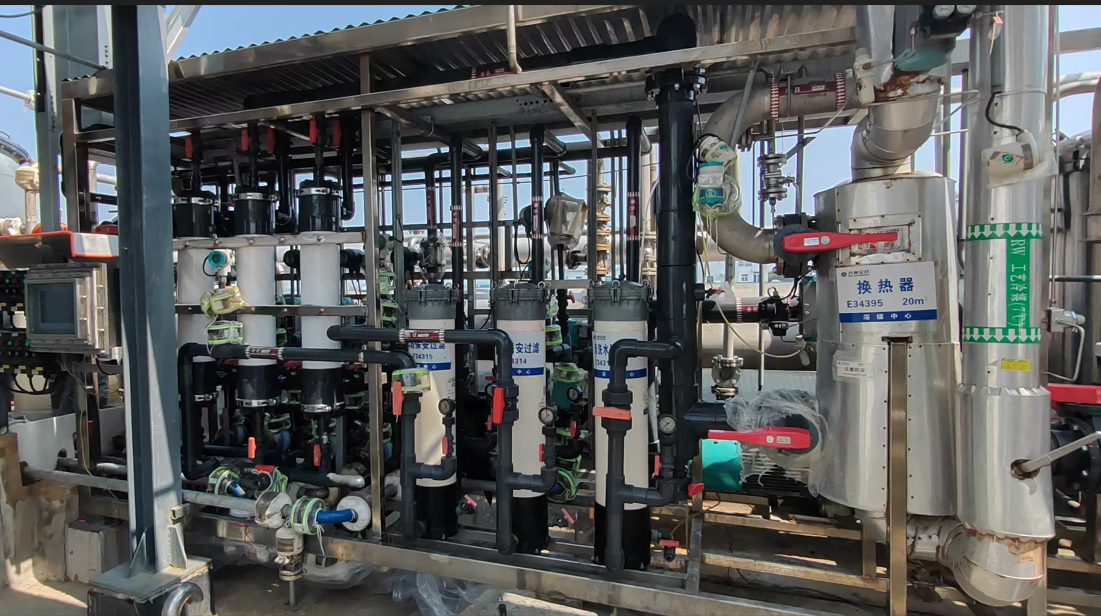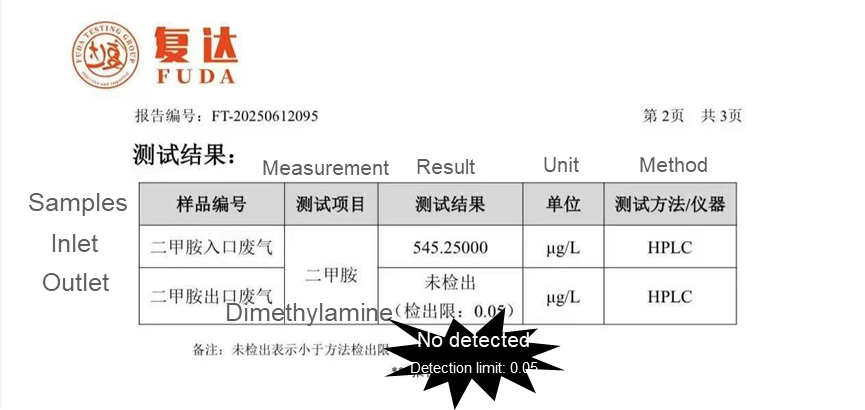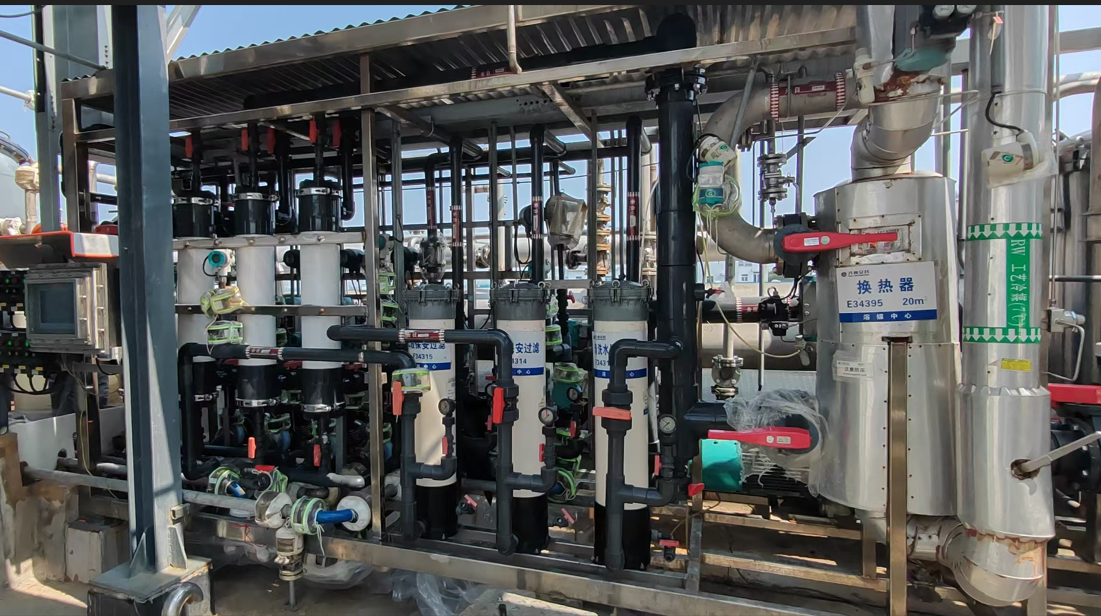025-5821-8016


The Bidun PTFE membrane contact reactor has been successfully applied in the removal of Dimethylamine exhaust gas.
(Case study on the treatment of dimethylamine waste gas)
Project Introduction:
A particular enterprise utilizes a significant quantity of organic solvents in the production process. To recycle and reuse organic solvents effectively is one of vital issues to ensure the consistent and reliable production of the enterprise. The environmental protection management of wastewater and waste gas is not an easy job. It is imperative that the enterprise should implement aa efficient and cost-effective treatment process for its dimethylamine waste gas.
(I) The issues to be addressed:
- The sulfuric acid spray treatment process is not very effective and can’t be adopted.
- The applied PP membrane contact reactor does not tolerate organic solvents, it is expensive and short lived.
(II) Solution:
Following a thorough analysis and research, The Bidun PTFE membrane contact reactor has been adopted. This reactor is manufactured by polytetrafluoroethylene (PTFE), a highly durable and corrosion-resistant material with features of high strength, corrosion resistance, resistance to pollution, oxidation resistance, high COD resistance, high surface area and smoothness.
Bidun holds independent intellectual property rights of this membrane-making technology, its production has been used in a variety of industry fields.
(III) The advantages:
- The functions of blow-off tower, chemical absorption tower, stripping tower and neutralizing reactor are achieved simultaneously in the membrane contact reactor. This offers the advantages of a high specific surface area, high mass transfer driving force, small footprint and reduced investment.
- The operation is conducted at low pressure. The electrical energy used is solely to drive the material liquid through the membrane module, resulting in a saving of over 80% on electricity.
- The product demonstrates consistent operational performance and a prolonged service life.
- The product's design incorporates a modular approach, linear amplification, and high waste gas treatment efficiency.
- The by-products is in high concentration and purity, it can be reused. Thereby operating cost is reduced.
- The entire process is airtight without secondary pollution risks.
- The process demonstrates high operating flexibility.
- The PTFE hollow fiber membrane boasts extremely stable performance and can be efficiently cleaned and regenerated.
Design parameter
( 1 ) The gas volume of dimethylamine exhaust gas system: 300m 3 /h .
( 2 ) Dimethylamine waste gas treatment system treatment requirements:
|
Dimethylamine |
|
|
≤20 mg/L (no obvious amine smell on site) |
( 3 ) Process:
Waste gas → Fan → Secondary filtration → PTFE membrane → Waste gas emission
The exhaust gas is heated by a heat-exchanger to be 30~40, then it is filtered by two filters with accuracy of 10μm and 1μm respectively,and then sent to the PTFE membrane at pressurize of 0.4bar to remove dimethylamine.
Actual operation performance
The enterprise entrusted a third party to inspect the performancee:

On site photo:
